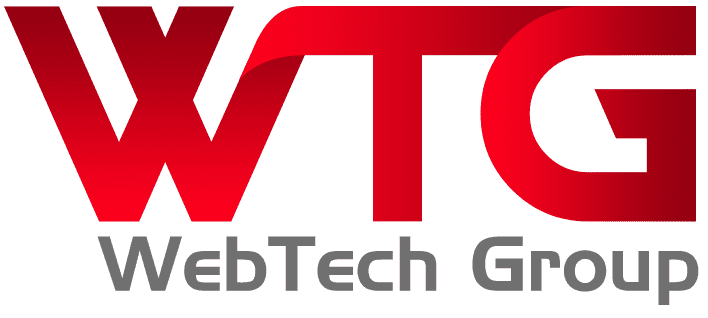
How to Create a Significant Online Presence: A Comprehensive Guide for 2025
ST. LOUIS, MO (StLouisWeb.Design) In today’s fast-paced digital world, building a significant online presence is not just an option—it is essential for businesses, professionals, and even individuals who want to establish authority, attract new opportunities, and thrive in competitive markets. Whether you are a small business owner, a blogger, or a growing brand, your digital footprint determines how the world perceives you. From search engine visibility to social media engagement, every touchpoint contributes to your reputation, credibility, and growth.
This comprehensive guide outlines the strategies, tools, and best practices you need to create and maintain a strong online presence that stands out in 2025 and beyond.
Why an Online Presence Matters More Than Ever
Your online presence is essentially your digital identity. When people Google your name, brand, or services, what they find defines their perception. A strong online presence provides multiple benefits:
- Credibility and Trust – Consumers often research businesses online before making decisions. A polished, professional presence builds confidence.
- Visibility and Reach – A website optimized for SEO, paired with social media activity, ensures you are discoverable to new audiences.
- Competitive Advantage – Many competitors neglect online branding. A strategic approach puts you ahead.
- Lead Generation – From online ordering to newsletter sign-ups, a digital presence drives revenue.
- Resilience Against Market Shifts – Businesses with strong digital footprints are less vulnerable to economic slowdowns or local challenges.
Step 1: Build a Professional Website for Online Presence
At the core of your online presence is a professional website. This serves as your digital headquarters, where customers, clients, and partners can learn more about you.
- Choose the Right Platform: WordPress, Shopify, and Squarespace are popular options, depending on whether you sell products, publish content, or showcase services.
- Prioritize SEO: Use clear meta titles, descriptions, and structured headings (H1, H2, H3). Include targeted keywords naturally within content.
- Mobile Optimization: With more than half of all web traffic coming from mobile devices, responsive design is non-negotiable.
- Fast Load Times: Site speed impacts both SEO and user experience. Tools like WP Rocket or Cloudflare can help.
- Clear Call-to-Actions (CTAs): Encourage visitors to book, buy, subscribe, or contact you.
Your website should be visually appealing, easy to navigate, and aligned with your brand identity.
Step 2: Leverage Search Engine Optimization (SEO) for Optimal Online Presence
SEO is the backbone of online visibility. Without it, even the best websites remain hidden.
- Keyword Research: Use tools like Ahrefs, SEMrush, or Google Keyword Planner to identify search terms your audience is using.
- On-Page SEO: Incorporate keywords into titles, URLs, headers, and image alt tags. Avoid keyword stuffing—focus on readability.
- Content Strategy: Publish high-quality, original blog posts and articles that answer common questions in your niche.
- Technical SEO: Ensure your site has clean code, proper schema markup, and an XML sitemap submitted to Google Search Console.
- Local SEO: For regional businesses, optimize your Google Business Profile and gather customer reviews to appear in local search results.
SEO is a long-term investment but delivers compounding returns by making your brand discoverable organically.
Step 3: Build a Strong Social Media Presence Enhancing Your Online Presence
Social media is where your audience engages, shares, and forms opinions. An active presence helps humanize your brand and amplify your message.
- Choose Platforms Wisely: Focus on platforms where your target audience is most active (Instagram, Facebook, LinkedIn, TikTok, or X).
- Consistency Matters: Post regularly using a mix of promotional, educational, and entertaining content.
- Engage Authentically: Respond to comments, messages, and reviews. Engagement signals build trust and boost visibility.
- Leverage Video Content: Short-form videos (Reels, TikTok, YouTube Shorts) dominate engagement metrics.
- Use Paid Ads Strategically: Even small ad budgets can amplify reach and drive targeted traffic.
Remember, social media is not just about promotion—it’s about creating conversations and building community.
Step 4: Publish High-Quality Content
Content marketing remains one of the most powerful ways to establish authority and attract an audience.
- Blogging: Long-form, SEO-optimized articles (1,000–2,000 words) perform well in search rankings.
- Video Marketing: Tutorials, product reviews, and behind-the-scenes clips foster personal connections.
- Podcasts & Interviews: Audio content offers another channel to share expertise.
- Guest Posts: Publishing on external platforms builds backlinks, traffic, and credibility.
- Email Marketing: Consistent newsletters keep your brand top-of-mind and nurture leads.
High-quality, original content differentiates you from competitors who may rely on generic or duplicate material.
Step 5: Develop an Email Marketing Strategy
Email is one of the few digital assets you fully control—unlike social media, where algorithms dictate visibility.
- Build Your List: Offer incentives like discounts, free guides, or exclusive content to encourage sign-ups.
- Segment Subscribers: Tailor messages based on customer interests or behaviors.
- Automate Campaigns: Tools like Mailchimp, ActiveCampaign, or HubSpot streamline follow-ups and nurture sequences.
- Track Metrics: Monitor open rates, click-through rates, and conversions to refine campaigns.
A well-executed email marketing program boosts engagement, loyalty, and revenue.
Step 6: Harness the Power of Online Directories and Listings
For businesses, being listed in online directories strengthens both credibility and SEO.
- Submit your business to platforms like Google Business Profile, Yelp, Bing Places, and niche directories relevant to your industry.
- Ensure consistent NAP information (Name, Address, Phone Number) across all platforms.
- Encourage satisfied customers to leave positive reviews.
These citations send strong trust signals to search engines and customers alike.
Step 7: Invest in Online Advertising
While organic strategies build long-term sustainability, online advertising accelerates visibility.
- Google Ads: Capture intent-driven searches with targeted pay-per-click campaigns.
- Social Ads: Platforms like Facebook and Instagram offer precise demographic targeting.
- Retargeting: Keep your brand visible to visitors who didn’t convert the first time.
Even modest ad budgets can produce significant ROI if campaigns are properly optimized.
Step 8: Monitor Your Online Reputation
A positive reputation is critical to sustaining a strong digital presence.
- Track Mentions: Use tools like Google Alerts, Mention, or Brand24 to monitor brand references.
- Respond Promptly: Address negative reviews with professionalism and empathy.
- Highlight Testimonials: Showcase satisfied customers’ stories on your website and social channels.
- Transparency Wins: Owning mistakes and responding with honesty builds long-term trust.
A proactive approach to reputation management prevents small issues from escalating into PR crises.
Step 9: Analyze, Adapt, and Improve
Building an online presence is not a one-time project but an ongoing process.
- Analytics: Use Google Analytics or GA4 to track website performance.
- SEO Tools: Monitor keyword rankings, backlinks, and domain authority with Ahrefs or SEMrush.
- Social Insights: Evaluate post performance and adjust strategies accordingly.
- A/B Testing: Experiment with different CTAs, landing pages, and email subject lines to optimize results.
Continuous improvement ensures your digital presence grows stronger with time.
Common Mistakes to Avoid
- Inconsistency: Irregular posting or outdated websites undermine credibility.
- Neglecting Mobile Users: A poor mobile experience drives away potential customers.
- Overlooking Reviews: Ignoring negative feedback can permanently damage a reputation.
- Focusing Only on Sales: Pushing products without offering value alienates audiences.
- Failing to Adapt: Digital trends evolve quickly—staying stagnant limits growth.
Final Thoughts
Creating a significant online presence in 2025 requires a blend of strategy, consistency, and adaptability. From building a professional website and leveraging SEO to engaging on social media and nurturing email lists, every step contributes to your overall visibility and credibility. The most successful brands don’t just market themselves—they create value, foster community, and earn trust.
In an age where first impressions are often digital, your online presence is your most powerful asset. Treat it as an ongoing investment, and the returns—in visibility, opportunities, and revenue—will follow.



